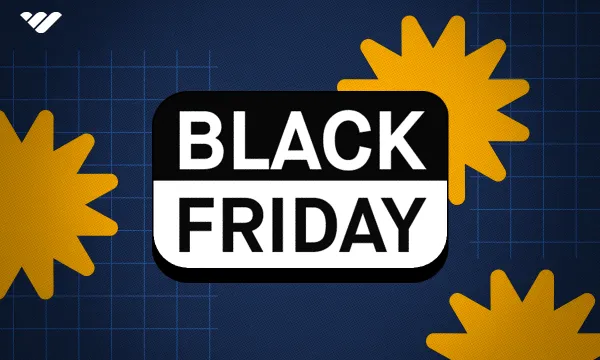Customer behavior has been studied formally for a long time, and every business is based on at least a basic grasp of it. Some of history’s most successful companies have been built off the backs of their founders’ intuitive understanding of customer behavior, and success in today’s economy often comes down to proper analysis of customer behavior.
This guide will take a deep dive into the world of customer behavior, first exploring the ins and outs of buyer behavior before showing you exactly how you can do your own customer behavior analysis with the resources you have available and tools that are easily acquired.
What is Consumer Behavior, a.k.a Customer Behavior?
Customer behavior is the term given to a person’s purchasing habits, ranging all the way from their mindset, attitude, and personality all the way to the factors influencing their buying decisions and which forms of marketing and communication work best with them.
Businesses that understand the behavior of their customers can put themselves in a position to serve customers better, create more appealing product and service offerings, and reach more customers with better-targeted marketing.
What Factors Affect Customer Behavior?

In order to really understand what factors affect consumers and cause them to behave the way they do, we’ve decided to build out four broad categories.
Personal
First of all, demographic factors are going to play a pretty big role in dictating buyer behavior. An eighteen-year-old and a sixty-year-old from the same region are almost certainly going to be shopping for different products even within the same categories, for example, and a single demographic factor can make all the difference—not just age, but location will change things up, as will gender or culture.
However, we’ve also got to lump in other personal factors here. Morals and belief systems can play a massive role in how customers behave, and a brand’s business practices in the realm of ethics can sway customers tremendously. For example, German chocolate manufacturer Ritter Sport’s decision to continue business in Russia following the invasion of Ukraine has caused some customers to boycott the brand.
Customers can also simply have major preferences that certain brands or entire product categories just can’t overcome—trying to sell steaks to a vegan comes to mind, it just isn’t going to work.
Psychological
Customer behavior also goes well beyond value systems and morals, because you’ve got to consider attitude and perception. Customers tend to love brands that align with them in a certain way, and brands are careful to tailor their marketing to try and play up these common threads. Look at clothing brands, for example—you could pick up practically the same sweater at H&M or The North Face, but consumers who favor the outdoors might lean toward the latter.
Perception of a brand is also a big deal and can play a big role in buying behavior. If you want to buy women’s swimwear on a budget, for example, you could again choose a brand like H&M or rather go for Victoria’s Secret. There’s actually not too much of a difference between the two bikinis from a quality standpoint (they’re probably even manufactured side by side and it’s possible that you get better fabric or QA standards from the H&M piece) but VS is perceived as a high-end luxury brand and generally costs a whole lot more. You’re paying for the marketing, the design, and the bits of bling.
Social
Finally, it’s important to look at social factors around both the consumer and the brand itself. Try and find out who your customers are being influenced by when it comes to their buying decisions. Marketing is one thing, but when customers start to really think about a purchase, the social factor is important.
For example, let’s say that you’re buying PC parts to build a new gaming or entertainment rig that you can, ahem, use for remote work. Unless you’re in the industry, you might be slightly out of the loop—you may not have looked at the current PC part market for at least a few months.
So, where do you go for your information, and who do you listen to? Do you have a family member or friend who works in IT and puts together lots of computers? Or do you fire up YouTube and check out a bunch of reviews from PC reviewers or influencers like Gamers Nexus or JayZTwoCents? Brands need to know the answers here.
Economical
This one probably falls under personal as part of demographics, but in this day and age it’s worth paying extra attention to the economical reality that most customers are living with. The concept of disposable income is something that ecommerce brands need to be extremely familiar with since people nowadays have less and less spending power.
The cost of living continues to increase in almost every country, with the prices of basic necessities constantly rising as the CEOs of the companies that sell them pay themselves record bonuses. According to Statista, CEO’s make 344 times the salaries of their workers today, with that same ratio being around 50 in 1985.
By that same token, the median home price in the USA is up over $400,000, having been well under $75,000 back in 1985. People just don’t have as much money to spend today as they did in times gone by thanks to the record prices of putting roofs over their heads and food on the table.
What is Customer Behavior Analysis?
Customer behavior analysis is a detailed look at customer behavior through quantitative, as well as qualitative, perspectives in order to create a detailed model of how customers interact with your business.
This analysis enables clear, data-driven decision making thanks to the understanding you’ll acquire of how your customers are influenced by extrinsic as well as intrinsic factors, and what different variables they deal with during the different stages of the customer journey.
Put simply, you’re looking to identify:
- what customers think of your products or services and others in the market
- what their preferences are
- why they buy what they do
- what they’re doing when they research and shop for products
- and what influence their surroundings (whether that’s other people, social media, where they live, etc) have on their decisions.
Why is Customer Behavior Analysis Important?
Customer behavior analysis can be a lot of work, or a costly exercise if you bring in consultants or a marketing team to do it for you. Should you really bother? Here are some reasons why customer behavior analysis could be important for your business:
- Customer value
One of the most important functions served by customer behavior analysis is the prediction and management of customer value, or the customer lifetime value metric. With the understanding of your customers that you can gain via behavior analysis, you’ll be able to better forecast and manage customer lifetime value, and even pivot your strategies to go after types of customers that tend to be more valuable over the long term. You can also identify differences in value among your customer segments accurately, and assign your resources accordingly. - Optimization of content
Your marketing content can benefit greatly from customer behavior analysis since you can use the knowledge gained to pick the right customer segments and target them using the most effective and appropriate channels—and it allows you to tailor your messaging in exactly the right manner, too. - Personalized marketing
We’re not talking about personalization to the individual level, but rather effective segmentation and tailoring of marketing content to those distinct groups. As a result your customers will feel more like you’re speaking to them directly and really understand what they need and expect. That perception, in turn, tends to lead to greater brand loyalty. - Increased retention
Brand loyalty generally translates to retention, so that’s another direct benefit. However, you may find through your analysis that some customer segments need to be acknowledged for their loyalty—they might expect some sort of rewards in return for their continued business. This is something you can act on easily, but you’ll need a customer behavior analysis to point it out to you. - Connection with customers
A customer behavior analysis really helps you to understand your customers, and if you act on that, you’ll create not just loyalty and retention, but also engagement. Keeping customers engaged and loyal is a recipe for true business success, and the connection your customers establish with you isn’t just good for lifetime value—you’ll also find that these customers also evangelize on your behalf across various channels. - Product development
The understanding of customer mindset and purchasing behavior you gain from a customer behavior analysis can also help you to identify the shortcomings or gaps in your products themselves, your product ranges, and even the market as a whole. These insights can help you iterate, fill out your ranges, and launch new products to fill market opportunities.
Customer Behavior Analysis Examples
Let’s take a look at a couple of examples of how customer behavior analysis has been used by major brands in the past with significant success.
Avocados From Mexico

Avocados From Mexico is one of the top avocado brands in the US, and the company worked with a firm called PA Consulting as part of a growth push starting in 2018. Here’s an excerpt from the AFM story on PA’s website:
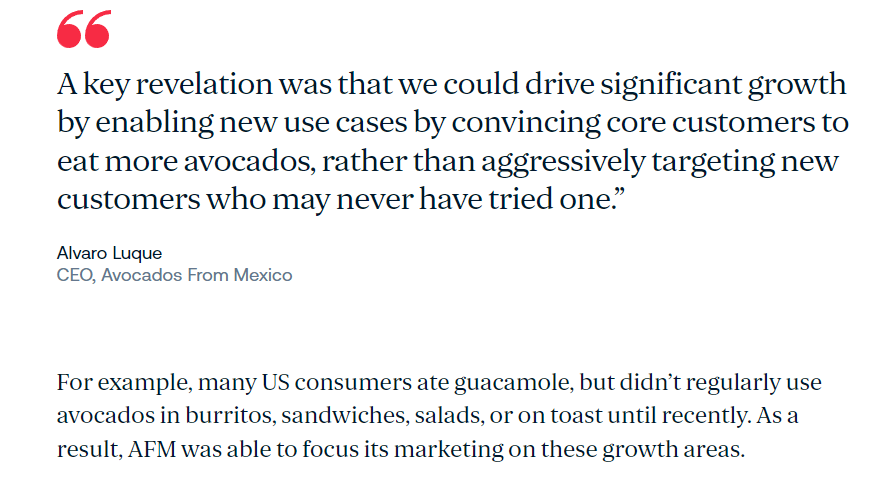
The insights mentioned by Mr. Luque are the sort of crucial data points revealed in customer behavior analysis that businesses can utilize, and even pivot their entire strategies around. It’s easy to imagine that AFM shifted significant amounts of marketing spend across to focus on selling new use cases to their core customers–and increasing their value–rather than chasing new ones.
Amazon Prime and Prime Day
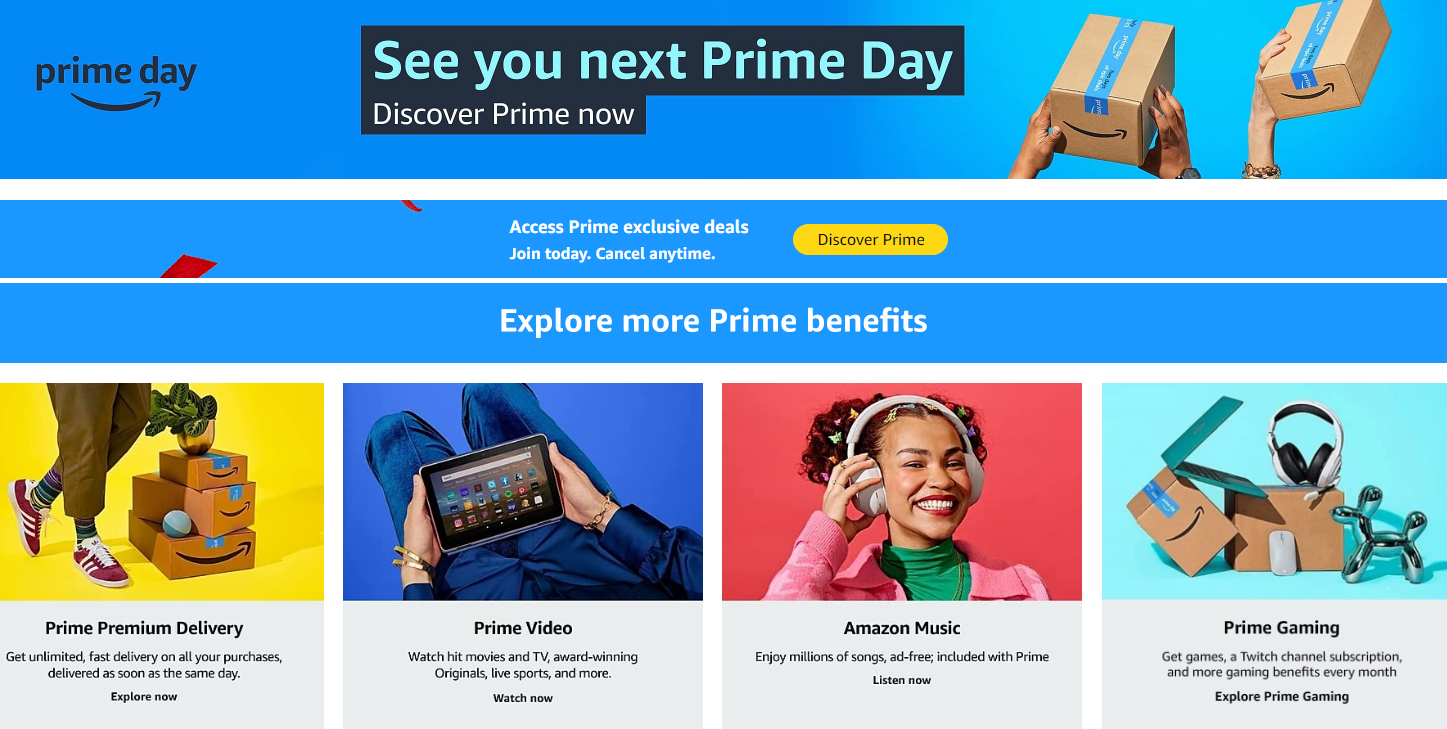
Amazon Prime and Prime Day don’t need much of an introduction, although it’s worth underlining just how much of a game-changer to the world of ecommerce Prime Day has been. The shopping calendar used to be extremely dry in July, but with the introduction of Prime Day some 10 years ago (and similar shopping events launched by just about every other Amazon competitor) it’s become a whirlwind shopping month—this year, Prime Day brought in over $14 billion in sales according to Adobe Analytics.
However, the original motivation of Prime Day was to promote Amazon Prime—and as the above image shows, it hasn’t changed. Why? Well, according to Consumer Intelligence Research Partners, the average Prime member spends about $1200 a year on Amazon compared to the average non-member spend of $600. Perhaps Amazon might not ever have launched Prime Day if they hadn’t known—but you can bet that they did the analysis!
How to Do Customer Behavior Analysis For Your Business
So, how can you get started with your own customer behavior analysis? If you don’t want to bring a firm in to do it for you, you can simply follow these eight steps.
1. Segment Your Customers
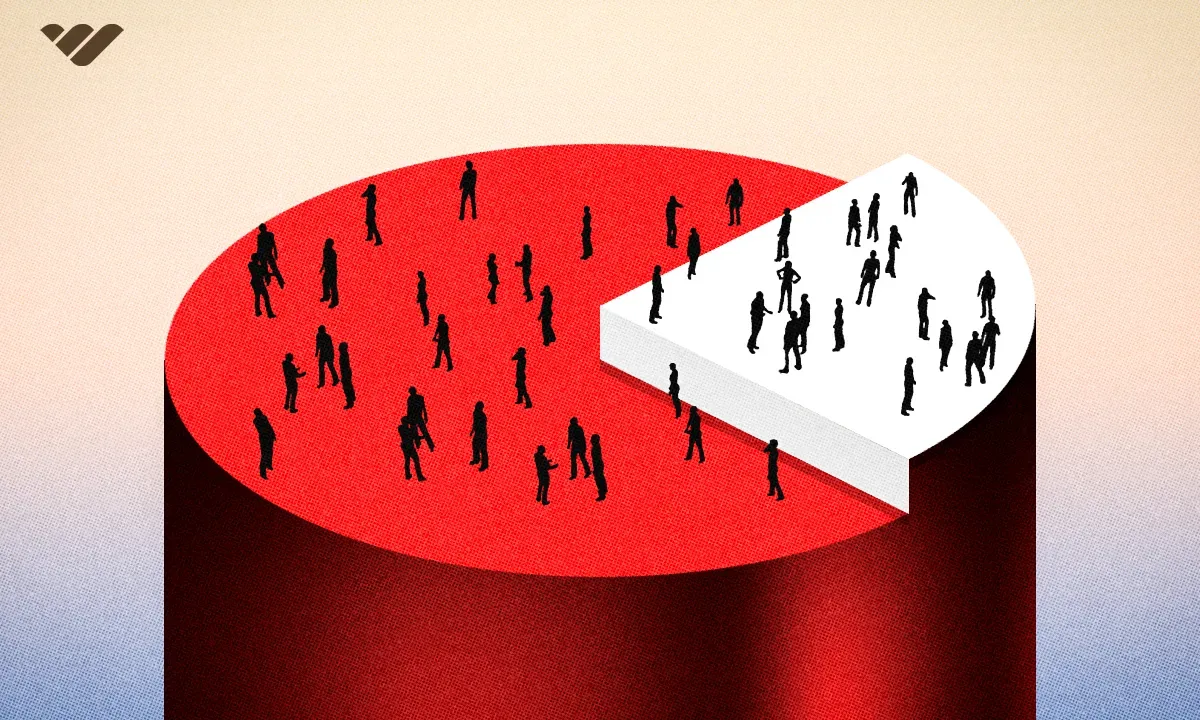
First things first, you’ll want to segment your customers. The point here is to break your customers up into major groups with certain defining characteristics that you can then target and interact with in different ways.
There are several ways to segment your audience, so it’s worth looking at a few alternatives. For instance, you could look at the data you get from a tool like Google Analytics. That’ll give you a few basic starting points, such as the location of your users, their age, the sort of device they’re browsing your site or store from, and so on.
If possible, though, you should go a lot deeper than that. Learn what your customers’ professions are, what sort of hobbies they have, what other products they buy, what social media platforms they’re on, and what they think of your and other brands. Brief and to-the-point surveys can help you accumulate a lot of this information.
You might end up segmenting your customers by geographical location, as traditional firms do, or by other demographics such as age and gender. Different generations often need to be dealt with and marketed to in different ways, after all. Then there’s psychographic segmentation, where you split people up based on personality or values. Behaviors are another means, such as by preferred media channels.
Then of course there’s value segmentation, which you’ll also need to keep an eye on. Who are your highest value customers, and what do they have in common? If you can figure that out, there’s a lot you can do with it.
2. Identify Key Benefits
Now that you’ve worked out your segmentation, you’ll need to figure out exactly why this segment is buying your product or service. What exactly is driving the purchase decision, and what key benefits or selling points are they being swayed by?
Understanding exactly why the different segments of customers are buying your product will help you perfect your USP and target your marketing going forward. It’ll also help you to understand the customer journey, which’ll then let you improve the customer experience overall.
A lot of the information you’re looking for is qualitative in nature, so while quick surveys can still help, you’ll want to look at qualitative research techniques here. There’s nothing like spending some time interviewing buyers and users to really understand their purchase decisions.
3. Develop Customer Personas

Customer personas, also known as consumer personas or target personas, are a consumer research technique that helps to increase lead generation and accelerate product development. It’s also a very common follow-up to segmentation—essentially, you’re building a fictitious “person” onto whom you'll tack all of the characteristics of your chosen segments. So, each segment is represented by one persona.
Personas allow you to really drill down into the needs as well as pain points experienced by the different segments, and you can then map out an ideal experience for them. You can then put yourself in their shoes and see things from a customer’s perspective.
It’s also worth really breathing life into your persona. Give them as many traits from your segments as you can, and consider what you already know about consumers. For instance, it’s widely held that there are four types of purchasing behavior—complex, where people really research a purchase such as a house; dissonance reducing, where the purchaser seeks reassurance after the purchase that they’ve chosen correctly; habitual, where the purchase is made out of habit and for preferred taste; and variety seeking, where consumers might simply get bored of the same taste.
You can bake all of these traits–and whatever other models or marketing research insights you have–into your personas, and use them as super-detailed facsimiles of your customer segments.
4. Gather Customer Insights
All the way through from step one, customer segmentation, you’ve been working on qualitative consumer research. This one’s the pinnacle of it, although you might already be halfway there if you’ve been doing interviews with customers and other stakeholders.
Customer insights are best gleaned in this way, and the point is to take some time and really understand the journey of a few of your customers first-hand. An hour spent with a customer over coffee or a few in your target location chatting with your target demographic can help you really understand how they behave—and it might even open your eyes to faulty assumptions you might have had, or untapped areas of opportunity.
Consider swimmers, for example. By sitting down and talking to them, you’ll find out all sorts of interesting behaviors and pain points—for one thing, they often wear multiple old swimsuits on top of each other when training to increase resistance. For competition, they usually wear suits that are several sizes too small, and it can take quite a while to wriggle into them prior to a race.
And that’s just common behavior that anyone around swimming or connected to a swimmer might know. If you really want to get into their heads, spend a day around a pool and just watch, notes at the ready. Promise a few swimmers a free sample of your suit in exchange for a half-hour chat. You’ll learn heaps, and some of the insights you come away with might be game-changing for your business.
5. Derive Quantitative Data
Staying with the swimmer example, how do you think they differ from triathletes? Well, a quick survey of publicly available research data will tell you that the average triathlete earns up to three or even four times more than the average swimmer. When you interview them, you’ll find that triathletes tend to be driven personalities, which is usually what translates into their relative career success.
Now, a good bit of that is qualitative information, but the average salary figures are quantitative—researchers have collected data from a lot of people to come up with that information. You can find a whole lot more data like this by canvassing external sources, and there’s plenty to be found for free.
You’ll also want to use as much data as you have on your customers for this exercise. Blog subscription data, for instance, or product usage reports should be easy to pull. Analytics suites like Google Analytics can really help you to pull as much information as possible together—and once you have all of that data in one place, you can start putting it to use.
6. Compare Qualitative and Quantitative Data
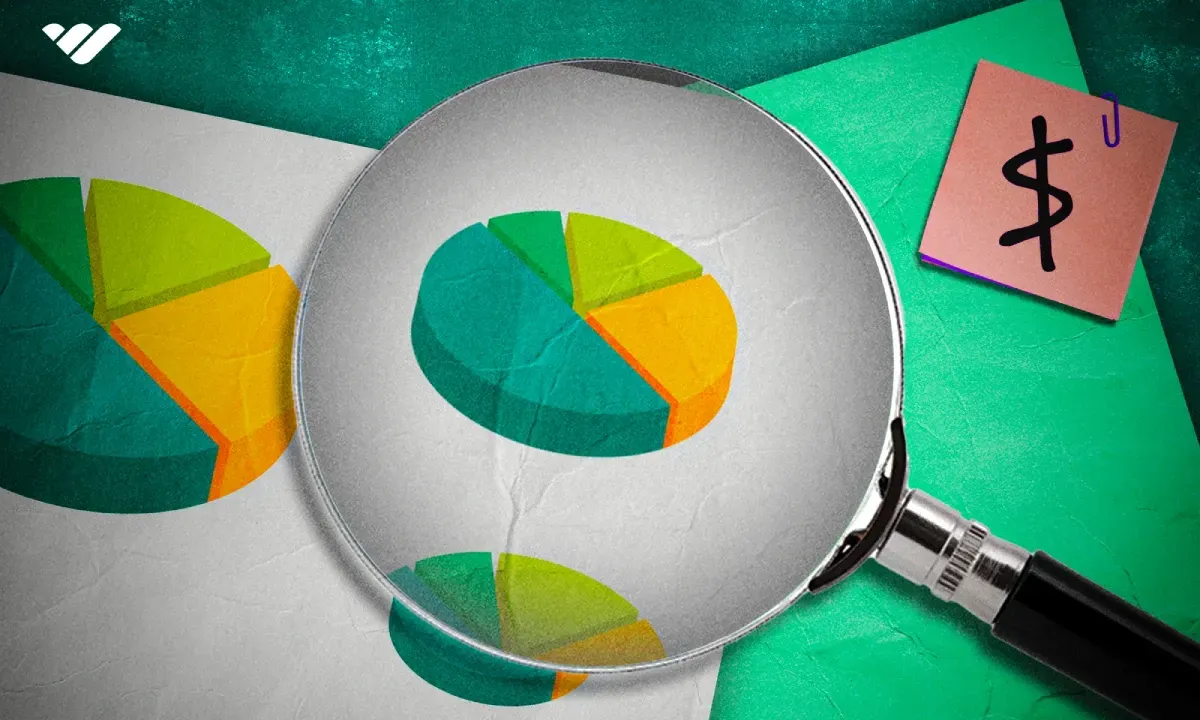
Now that you have all of the data you need, it’s time to go through the entire customer journey map. Your personas will come in handy here, and you can take them through your customer journey and look at every stage of the experience with your data sets to hand. Identify who bought which product when, where, and why, then see what they did after that.
The end result is that you build an in-depth understanding of your customer’s journey and identify recurring trends or obstacles that arise at certain points. The personas will help you to sort behavior by segment, and it’s worth devoting special attention to the journeys of your highest-value segment.
Customer service is another big area to keep an eye on with data at hand. Brands have to meet the needs of customers, and this often boils down to prompt, effective customer service. Furthermore, segmentation and personas can help in additional ways, such as choosing to focus on different customer service channels—some people prefer phone calls, and others lean heavily toward written (emails or DMs) communication.
7. Apply Analysis Findings
With all of your research done and your customer journey mapped out in reference to all of the data, what’s left is to put all of it to work. It’s time to start looking at what you’ve found out for each of your personas, optimizing the best content delivery channels for each, and prioritizing the personas and segments that are going to deliver the highest long-term value.
It’s also worth considering that every change should be measured, especially when it concerns existing, already-loyal customers. A hard pivot might lead them to question your decisions and test their loyalty, even if the changes you make are positive—humans are just naturally resistant to change, sometimes. Make sure you have a read on how your customers will react to any changes, and ease them through it.
8. Assess Results
Following the application of your new insights to your marketing campaigns and changes, if any, of business direction, it’s very important to measure them. Use as much of a data-driven approach as possible in order to do this! We’ve mentioned customer lifetime value several times now so that’s a key metric, but you’ll also want to look at others like customer acquisition cost, conversion rate, retention and churn, engagement, and more.
Trends can take a while to establish themselves and fads come and go, and customer needs are rarely static. The internet’s a fast-moving realm too, meaning that the face of ecommerce is always evolving, and it’s worth keeping your analysis as current as possible by constant capturing of data, refining of personas, and staying in touch with your customers.
The Best Customer Behavior Analysis Tools
We’ve picked out three extremely good analysis tools for customer behavior here, but if you want more choice check out this article. The list there’s more broadly targeted at ecommerce, but just about every entry looks at customer behavior in one way or another.
Google Analytics
We’ve already mentioned Google Analytics but it definitely deserves its own section here. It’s a powerful tool that gives you real-time data as to the usage of your site by its visitors, which helps you understand the customer journey and build up a bank of insights. The website and traffic data it provides can be priceless, feeding you with both qualitative and quantitative information.
It’s also free to use, which is brilliant since you’ll be scoring real-time metrics, integration with Google Ads, getting reports on acquisition, engagement, and monetization, and sync with the rest of your Google suite of products.
Geckoboard
Geckoboard is a simple dashboard builder that allows you to pick and choose what metrics you want to include in your ongoing customer behavior analysis. It takes hardly a few minutes to set up, given the drag-and-drop nature of the interface, and it hooks up with over 90 data sources. On the flip side, you’ll have to shell out $39 per month to use it.
Supermetrics
Supermetrics is a powerful tool that draws in data from a variety of sources including your site, store and socials, and experts them into tools you use (such as spreadsheet software, data integration tools, or collaborative work platforms). It does a great job of coloring in the customer journey with all of this data, so you’ll get plenty of actionable reports and insights if you sign up.
Find Ecommerce Advice, Tools and Education on Whop
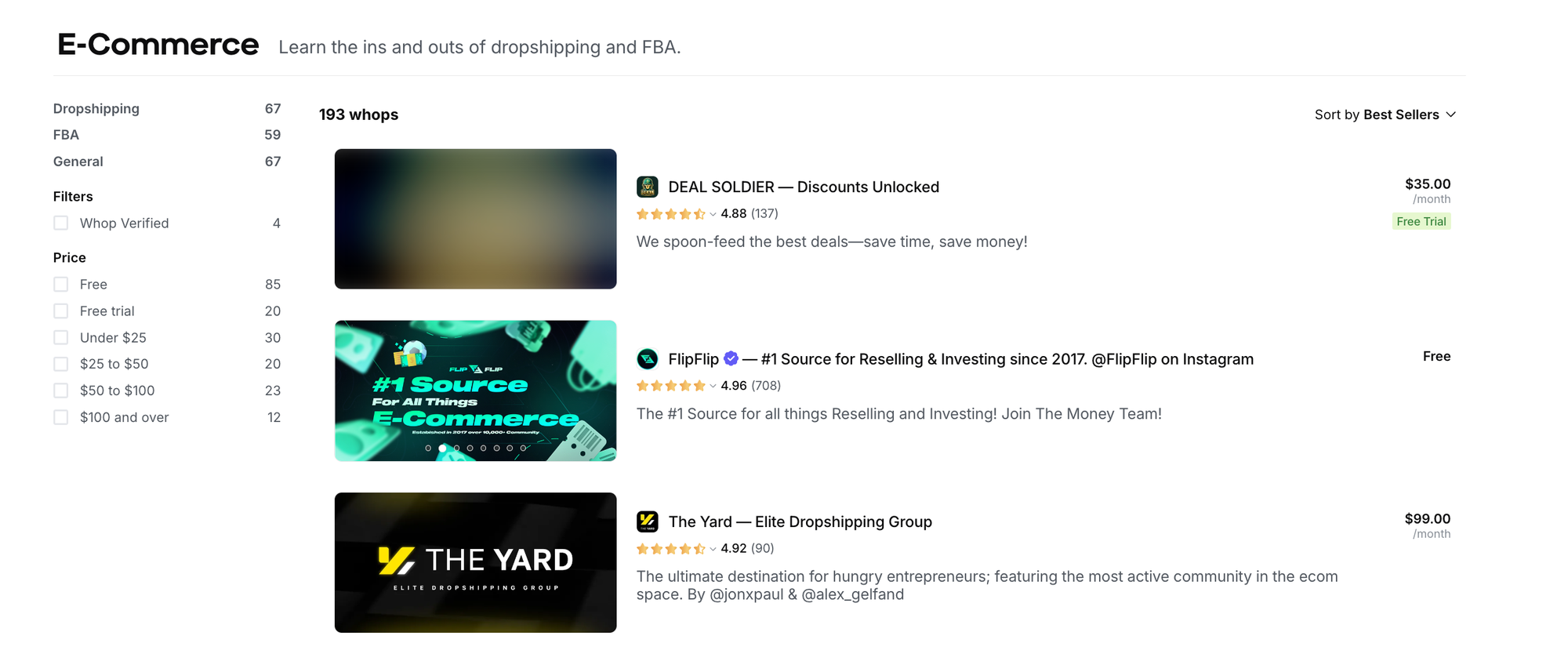
If you want to take customer business analysis seriously, Whop is one of the best places to get started. Home to some of the top ecommerce groups and communities on the net, Whop’s Ecom experts can help you to perfect your customer business analysis techniques and research methods. You’ll also be able to find some of the newest tools for the job on Whop, made by and for business owners just like you.
It’s also worth considering linking your ecommerce business up with Whop if you want to get the maximum out of your research insights and analytics. Whop has a powerful business dashboard and links up perfectly with tools like Google Analytics—and better yet, allows you to put all of your analysis findings into action with a variety of marketing options and integrations for your online store.
To get started, all you need to do is visit Whop and create an account. Whether you want to sell with Whop or learn from a Whop community, signing up takes just a few minutes and is completely free.


